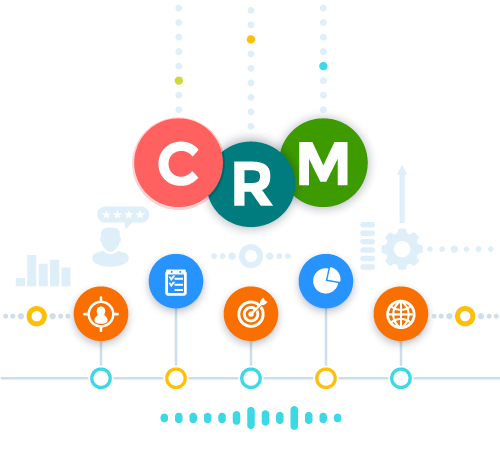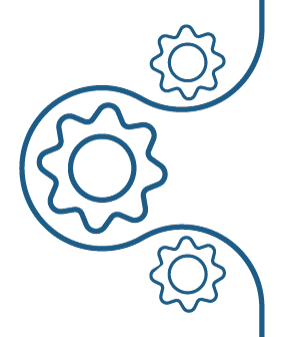
But perhaps somehow your operations always find a way of side-tracking you:
- Just as your sales team has achieved maturity your lead sales person quits.
- You find out that you lost a potential customer to a competitor because you didn’t have the resources to follow the sales lead effectively.
- You have lost a sale or will make a loss on the sale because your junior sales person used the wrong pricing table when quoting.
- You can’t keep up with preparing the content of each marketing campaign.
- The advertisement aiming to reach a wider customer audience has been published on the internet without you being able check its contents.
- You feel the necessity to describe in detail the tasks for your sales team at every meeting, you find yourself micromanaging them and nothing seems to run smoothly without your intervention.
- Returning from a much-needed vacation, you’re greeted by an overwhelming workload that makes you question if the break was worth it.
Anything familiar? Maybe the inertia of day-to-day business boxed you into a corner so you are no longer acting but just reacting? If so, it’s unlikely that you will be getting round to unleashing your creative energies for the growth of your business any time soon. It seems that those plans will just have to wait!
There is of course, a way out of the weeds – otherwise this would be a very short article indeed: You need the right managerial strategies supported by the right tools. Choosing the right “strategies”, is something I might come back to in a future article. But in all probability as the manager of your business, you already have a clear idea of the strategies you would implement, if you had the right tools. So, I will give priority here and start by addressing the question of “tools”.

But in today's fast-evolving markets and digitally driven business landscapes, the pivotal role of customers and the imperative of nurturing robust relationships have surged dramatically. Simultaneously, the possibility for organizations to proficiently manage these relationships without dedicated CRM tools has dwindled to near nonexistence.
Unfortunately, not all CRM tools are created equal. Many CRM solutions lack the capabilities to efficiently manage, monitor, measure, and analyze high-speed processes involving complex customer interactions, or to support their rapid improvement. This is where workflows come into play: Defining CRM processes as workflows leads to the freeing of human resources locked up in the manual repetition of tasks, radical simplification of process knowledge dissemination, and easing of the burden of onboarding new staff. Most importantly, effectively employing workflows enables you to shift your focus from operational details to actively monitoring, analyzing, and improving your CRM processes.
With this in mind, I will be providing with you some pointers as to how to use workflows to manage customer relationships and get on the path to growth. But workflows are just descriptions of process dynamics which are best supported by process-driven CRM architectures, consequently this is where we should start. So, if you’re ready, let’s dive into the world of customer-centric CRM tools and workflow automation.
What is process-driven CRM?
The architecture of traditional CRM applications is data-driven. These applications are decomposed into modules and sub modules that correspond to functional data domains such as customer accounts, opportunities, sales, surveys and others. Process-driven CRM on the contrary, has a process first approach.
In a process first approach, processes determine the rules regulating data. When processes change, old data elements are simply replaced with new ones that align with the new process requirements. In contrast, data-driven CRM, data structures have to be queried to determine their relevance to the current process design. This makes change management harder. “Process-driven” means that data is no longer a passive subject for storage, editing and querying, but participates in automated driving of business processes through your organization from start to finish, ensuring a consistent and efficient customer journey following business rules that conform to your design.
Why is process-driven CRM important for your business?
There are four major reasons why your organization should seriously consider taking the process-driven CRM path.
Efficiency and effectivity:Well defined and automated processes eliminate the waste of processing time and human resources. They cut out most human error and reduce the onboarding time for your new staff. Elimination of routine repetitive tasks allows your people to concentrate on tasks with high cognitive value, benefitting both them and your business. All this adds up to faster, error-free processing and high customer satisfaction.
Consistency and uniformity:Defined processes ensure all customer interaction follows pre-defined rules and standards, independent of the participant persons in the process. Serving customers in a consistent and uniform manner increases the customer perception of your organization’s trustworthiness and reputation, and adds to overall customer satisfaction.
Compliance and risk management:Regulations such as GDPR and CCPA provide citizens with control over the use and secure storage of their personal data. These regulations should be viewed both as a legal obligation as well as an ethical imperative of your organization. The faithful following of such regulations is necessary in all business areas but particularly so in health and finance related businesses. Process-driven CRM makes regulatory compliance much easier. Associating data directly to processes provides transparency of data collection and utilization which simplifies auditing. Compliance rules can be easily implemented through business rules that guide process workflows and can be equally easily modified in response to regulatory changes. In short, Process-driven CRM ensures regulatory compliance and elimination of inadvertent non-compliance. It positively impacts the customer experience by demonstrably protecting your customer’s data and reputation.
Scalability and manageable growth:With process-driven CRM, it is easy to scale-up to larger transaction volumes without compromising on quality or performance. Onboarding new staff is quick and easy. Processes are ready-documented, and most of the business logic of the process is handled by your CRM application and has limited reliance on personal skill and training levels. Even in times of rapid growth, you can trust your CRM solution to keep up with your pace.
Why are workflows central to process-driven CRM?
This is best explained with some examples. Let’s take a look at some example workflows relating to sales, marketing and customer experience:
Example workflow: Winning potential customers
- Tap into web sites, social media platforms, events, email campaigns and other sources to identify potential customers.
- Assign potential customers to suitable customer representatives.
- Monitor the status of potential customers at frequent and regular intervals.
- Update the potential customer pool according to interactions and sales potential.
- Asses, qualify and engage with potential customers to convert them into paying customers.
Example workflow: Winning customers
- Collect data to gain customer insight.
- Create a customer profile and update the customer card.
- Inform relevant department and teams about the customer.
- Initiate communication with the customer to promote your products and services using “welcome” emails or voice calls.
- Setup meetings, conferences and webinars to invite customers.
- Monitor the progress of customers throughout the sales process to ensure they are bought progressively closer to a sale.
Example workflow: Providing customer service
- Collect customer support requests omnichannel over all communication channels and convert these into categorized issues.
- Assign issues to the correct support teams according to category, importance, priority and other attributes.
- Identify issue priorities and solution/response times.
- Communicate with the customer for additional information or updates.
- Handle issues not resolved within predetermined service times by escalating the issue to a manager higher up in the escalation hierarchy.
- Resolve issues and inform customers about the solution.
- Close issues according to customer feedback.
Example workflow: Managing sales leads
- Record and calibrate leads.
- Assign leads to suitable sales representatives.
- Monitor lead generation steps and the sales phases.
- Set follow-up tasks and reminders.
- Meet with the sales team about the progress of the lead.
- Close leads.
- Analyze results and provide feedback for process improvement.
Example workflow: Customer surveys
- Determine survey type and scope.
- Design questionnaire templates specific to the survey channel.
- Develop questionnaire content.
- Determine target survey audience.
- Analyze and categorize survey results for actionable insight.
- According to survey results, assign feedback tasks to relevant departments or teams.
- Monitor the actions and feedback.
- Monitor change in customer insight.
- Leverage customer feedback to determine improvement opportunities and put process improvement into action.
Example workflow: Contract/subscription renewal and cross-selling
- Determine customers with up-coming renewals and additional sale opportunities.
- Inform customer/sales representatives about the opportunities.
- Review customer information, usage data, and contract details that might be necessary for renewal and/or cross sales.
- Reach-out to customers to discuss renewal conditions or cross-sale opportunities.
- Negotiate and close renewal/sales conditions.
- Update customer cards and report on renewal/cross-sale success ratios.
Besides these, an unlimited number of workflows reflecting particular the needs and strategies of your organization can be defined.
Many sequences of workflow steps are common to different CRM processes. These can be defined as sub-workflows that can be utilized by main workflows. This eliminates duplication and ensures uniformity across processes. Examples of such sub-processes are quoting, organizing webinars, presentation planning.
The crux of easily defining and modifying such workflows is to clearly define the steps of the workflow and identify responsible persons or groups to which these steps should be assigned to. The whole flow is then brought together by automated business rules.
What are key considerations in workflow Design?
Workflows are the backbone of your CRM process management. They determine the sequencing of steps/tasks and the business rules that govern them. Depending on the nature of the process being automated, workflows may consist of simple linear sequences of steps or contain complex branching logic with cross references to many other (parent, sibling, or child) workflows.
Let’s explore important considerations in the phases of workflow design.
Process analysis and workflow design
Before setting out to design a workflow, you should analyze and map current processes. Transitioning to a process-centric CRM is a great opportunity to revisit how you do business. Just by virtue of digitalizing your processes many improvement opportunities will become apparent. There will also probably be a backlog of process improvement wish-list items that you will want to take the opportunity of implementing. This analysis is also an opportunity to understand your interactions with customers, the phases of the customer life cycle, and relationships and cross-dependencies with other stakeholders and systems. Your analysis should facilitate the implementation of data fields to be used on customer cards and the forms/pages associated with steps of the workflow. Of course, this must also include determining access authorization rules for data fields at the different steps of the workflow.
Automation and integration
The objective of CRM workflows should be to automate repetitive tasks and smooth integration with other systems and applications. For example, you can design workflows that automatically determine and assign customer representatives, auto-respond to emails based on pre-designed triggers or conditions, and update customer records. Similarly, a recipient customer reading an email can trigger a special task that is auto-assigned to the relevant customer representative, and filling out a web form can trigger an amendment to the customer card.
Performance criteria, reporting and analysis
Measurability forms the foundation of manageability for CRM processes and their workflows. You should carefully set key performance indicators (KPI) and continuously monitor them. Statistics such as customer satisfaction (CSAT), sales closing rate (CR), and other metrics unique to your organization ensure the rapid identification and response to problems in your workflows, optimizing them to deliver increased customer and stakeholder value.
Flexibility and customizability
It is very hard to imagine a business without change. Even when markets are relatively static (a rare situation in our increasingly digitized world!), stakeholder goals, technology revolutions, the regulatory environment, competitors and other elements of the operating environment are in constant flux. Change is the name of the game, and you have to be ready to respond.
First order of business is to identify change. You must continually monitor and measure CRM process performance. Your CRM system should provide analysis and reporting tools that ensure this is done effectively. Then, you must be able to design and test process and workflow changes to respond to the change. Your key users should be able to perform this on-the-fly whilst your CRM system is in service. Very importantly, process improvement must not be held-up by IT requirements or coder resource bottlenecks. This is why a no-code CRM platform is essential for effecting change easily and efficiently.
What is the CRM workflow value proposition
Efficiency and cost optimization
Automation drives down costs by eliminating unnecessary processing steps, eliminating the need for human intervention in automatable tasks, reducing bottlenecks, eliminating processing errors and rework, reducing processing times and optimizing human resources allocation tasks.
Effective coordination
Workflows assigns tasks and routes data according to transparent business rules. Task assignment is based on user and user group roles. This eliminates blind spots in communication, enhances collaboration and eliminates conflict arising from misunderstanding and miscommunication of roles and responsibilities. In this way a low-friction working environment is achieved whilst preventing tasks being inadvertently dropped.
Continuous customer experience improvement
Workflows facilitate fast, consistent and uniform customer interaction within SLA constraints. This leads to improved customer experience, heightened customer loyalty and increased repeat customers. Positive customer experience has a significant impact on revenue. Customers with a positive experience have a higher probability of becoming repeat customers and higher inclination to recommend your business to others.
Frederick F. Reichheld, Author of The Loyalty Effect
Data driven prediction
Workflows generate relevant, reliable, understandable, and comparable data that can be deployed for decision making and process improvement. This data enables reporting and analysis that leads to insight of both the customer and the organization itself. All steps of customer interaction are laid bare for effectivity and performance analysis. The uniform processing of customer interaction allows easy comparison and segmentation of customers and understanding of overall customer trends, which in turn can be the basis of strategic decision making.
CRM or BPM?
I think that many of you will be convinced by the arguments for process-driven CRM and the use of workflows in CRM. Those of you with exposure Business Process Modelling (BPM) tools though, might be questioning at this point the reason not to go directly with a BPM tool which, in addition to CRM, can utilize workflows to implement all business processes.
The answer is that, whilst a BPM tool might be viewed as an empty receptacle, a workflow enabled BPM is the same receptacle ready-full with all components to rollout a CRM system with a minimum customization effort. Although each organization has particular ways of executing business that differentiates it from its peers, the infrastructure of CRM processes are common to all organizations. Taking a BPM tool as a starting point is akin to coding a solution from scratch (not as fundamental an approach to be sure!). Which brings me to a final point I would like to emphasize: Your CRM system only represents part of your overall business processes. Make sure that it is designed be easily integrated with complementary BPM applications.

Conclusion CRM applications have become indispensable tools of businesses. The need for continuous change, the pace of change, regulatory pressure, the need for standard processing and the IT bottleneck make convincing case for no-code process-driven CRM architectures. Workflows and process management are basic to such CRM solutions.
Process-driven CRM facilitates simple omnichannel customer interaction, improves operational efficiency, enhances customer experience and satisfaction, and enables continuous process improvement. For this purpose it facilitates simple measurement, reporting and analysis. Process-driven
CRM mitigates the majority of regulatory compliance risks while ensuring rapid scalability of your business operations. It is the key to a CRM strategy that enhances both customer and stakeholder value.
CRM applications have become indispensable tools of businesses. The need for continuous change, the pace of change, regulatory pressure, the need for standard processing and the IT bottleneck make convincing case for no-code process-driven CRM architectures. Workflows and process management are basic to such CRM solutions.
Process-driven CRM facilitates simple omnichannel customer interaction, improves operational efficiency, enhances customer experience and satisfaction, and enables continuous process improvement. For this purpose it facilitates simple measurement, reporting and analysis. Process-driven
CRM mitigates the majority of regulatory compliance risks while ensuring rapid scalability of your business operations. It is the key to a CRM strategy that enhances both customer and stakeholder value.

